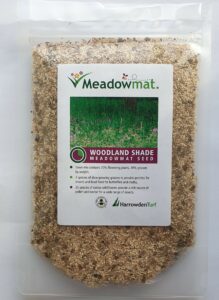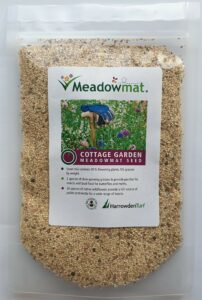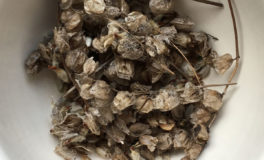I can’t argue with you, buying wildflower seeds is the cheapest way to buy plants. Simply because you will be doing most of the hard work – planting, germinating, nurturing and ultimately planting out. So, not surprising they’re cheaper per plant. But you also have a much greater degree of control and if you are a keen gardener, with a greenhouse, potting shed, all the tools and the knowledge gained from countless successful plantings then this is the route to wildflowers for you. You will know where your seeds have been sourced from and you already may have a preferred supplier. The variety of wildflowers available is truly mind-boggling and generally speaking there are more varieties available from seed than from plug plants, bulbs or plants themselves. The other great advantage of growing from seed is that win, lose or draw everything you achieve will be all your own work.
Information
The good news is that there is a huge amount of information available. The bad news is there is a huge amount of information available and some of it is contradictory. But start with the packet your seeds came in; the website you ordered from, or the shop you bought from. How to plant will vary from species to species; from soil type to soil type; from garden aspect to garden aspect. So, read carefully and be patient. If “safety” is your watchword in the garden, then the safe option is to sow into small trays or containers and then transplant when you have healthy seedlings, and the weather looks good. But not every wildflower will prefer this, so please check. They are nothing if not idiosyncratic.
Preferred conditions
…for wildflower seeds will vary by light, temperature, water and shade so there is plenty to go wrong. You may already have a preferred location in the house where you have successfully germinated plants before. It could be an airing cupboard, a favourite windowsill, ledge or even a shelf that gives exactly the right conditions. As ever, there are myriad gadgets that can help or hinder. But, wherever you choose and whatever help you deem necessary – please read the instructions. After germination, when you have what look like healthy seedlings, is the time to plant out which can be anywhere between four and six weeks depending on the usual factors…I’m afraid I can’t really advise when seedlings might be “strong enough”. It is very subjective.
Seed mixes to get you started
 |
 |
|
 |
   |
Wildflower meadows can provide an abundance of colourful and fragrant flowers. They will also attract beneficial insects like bees and butterflies. Plus, they require less maintenance than a traditional lawn, making them a great option for those who want a more eco-friendly and low-maintenance yard. Here’s a step-by-step guide on how to grow your own wildflower meadow from seed.
Choose the right location:
The first step in growing a successful wildflower meadow is to choose the right location. Wildflowers need plenty of sunlight, so select a spot that gets at least six hours of direct sunlight a day. Additionally, make sure the soil is well-draining, as wildflowers don’t do well in soil that is waterlogged.
Prepare the soil:
Before sowing your seeds, you’ll need to prepare the soil. Remove any existing grass or weeds, and rake the soil to create a fine, level surface. If the soil is compacted, you may need to aerate it by loosening it with a fork.
Choose your seed mix:
When choosing your wildflower seed mix, make sure it’s appropriate for your region and soil type. Look for a mix that contains a variety of annual and perennial flowers, as well as some grasses to provide structure and support for the flowers. You can purchase seed mixes from garden centres, online retailers, or specialized seed companies.
Sow the seeds:
Once you have your seed mix, it’s time to sow the seeds. You can scatter the seeds by hand or use a seed spreader to ensure even distribution. You should aim for a seeding rate of about 2-3 grams per square meter. After sowing, lightly rake the soil to cover the seeds with a thin layer of soil, which will help protect them from birds and other animals.
Water and wait:
After sowing, water the area thoroughly, and continue to water regularly until the seeds have germinated and the plants are established. This may take several weeks or even months, depending on the type of seeds and the weather conditions. During this time, it’s important to keep the area weed-free and avoid mowing or trimming the plants.
Maintenance:
Once your wildflower meadow is established, you’ll need to do some basic maintenance to keep it healthy and looking its best. This includes regular watering during dry spells, weeding as necessary, and cutting the grasses back in the fall to prevent them from taking over. You can also add a slow-release fertilizer in the spring to help the plants thrive.
In conclusion, growing your own wildflower meadow from seed is a great way to add beauty and biodiversity to your garden while reducing maintenance. With a little bit of planning and care, you can enjoy a stunning display of colourful and fragrant flowers that will attract beneficial insects and provide a natural habitat for wildlife. So go ahead and give it a try – you might just be surprised at how easy and rewarding it can be!





